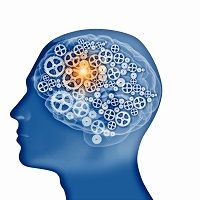Chronic Pain and Its Impact on the Meaningfulness of Life
Chronic pain may not be as immediately urgent or life-threatening as cancer, a cardiac event, or kidney disease. But as pain management specialists and pain patients see every day, the long-term effects of chronic pain on patients' lives can be nothing short of debilitating.

Chronic pain may not be as immediately urgent or life-threatening as cancer, a cardiac event, or kidney disease. But as pain management specialists and pain patients see every day, the long-term effects of chronic pain on patients’ lives can be nothing short of debilitating.
One constant challenge in pain management is that unlike white blood cell counts and other scientific measures of disease available to other specialties, pain is difficult to quantify and almost always relies on the interpretation of patients to assess. Thus, patients’ perception of their pain can be as important as the amount of pain they’re actually in. The connections between pain management and psychology are unsurprisingly strong.
A new study in the Scandinavian Journal of Pain dusted off some highly regarded and influential psychology work developed in the 1980’s: action identification. Developed by Robert Vallacher and Daniel Wegner, action identification theory is a little bit complicated, so let’s simplify as the study authors did in SJP: “Every action may be construed in several ways. High level construals confer greater meaning than lower level construals. When an action is interrupted at lower level, more concrete identity with reduced meaning is elicited.”
Still with me? Ok, good.
The study authors postulated thatinterference of activity by chronic pain affects the meaning ascribed to activity and thus a person’s overall sense of meaning in life. To test this theory, the researchers developed a novel measure they named Action Identification in Pain (AIP), and then administered the AIP to 47 chronic pain patients. After the test, study participants completed the Meaningful Life Measure, another psychology tool developed in 2008 to assess patients’ personal meaning, including purposeful life; valued life; accomplished life; principled life; and exciting life. The SJP authors also measured participants’ pain interference, level of depression, level of acceptance of their pain, and their overall level of optimism.
According to the study, “High levels of action identification were positively correlated with meaning in life and high levels of interference were negatively correlated with meaning in life.” The study authors found that only optimism ameliorated the effect of action identification. In other words, chronic pain patients holding higher levels of action identification report a greater sense of meaning in life.
Pain management specialists may intuitively understand this; it’s a nearly circular statement to say that optimism leads to a better life. But it’s an important reminder that the impacts of chronic pain go far beyond simply living with constant pain and limiting patients’ activities and overall quality of life. Chronic pain—and patients’ perception of it—gets all the way to the biggest question there is: What meaning does my life have? Optimism, whether through times of relief from pain, or a change in the patient’s perception of their pain, can change lives.